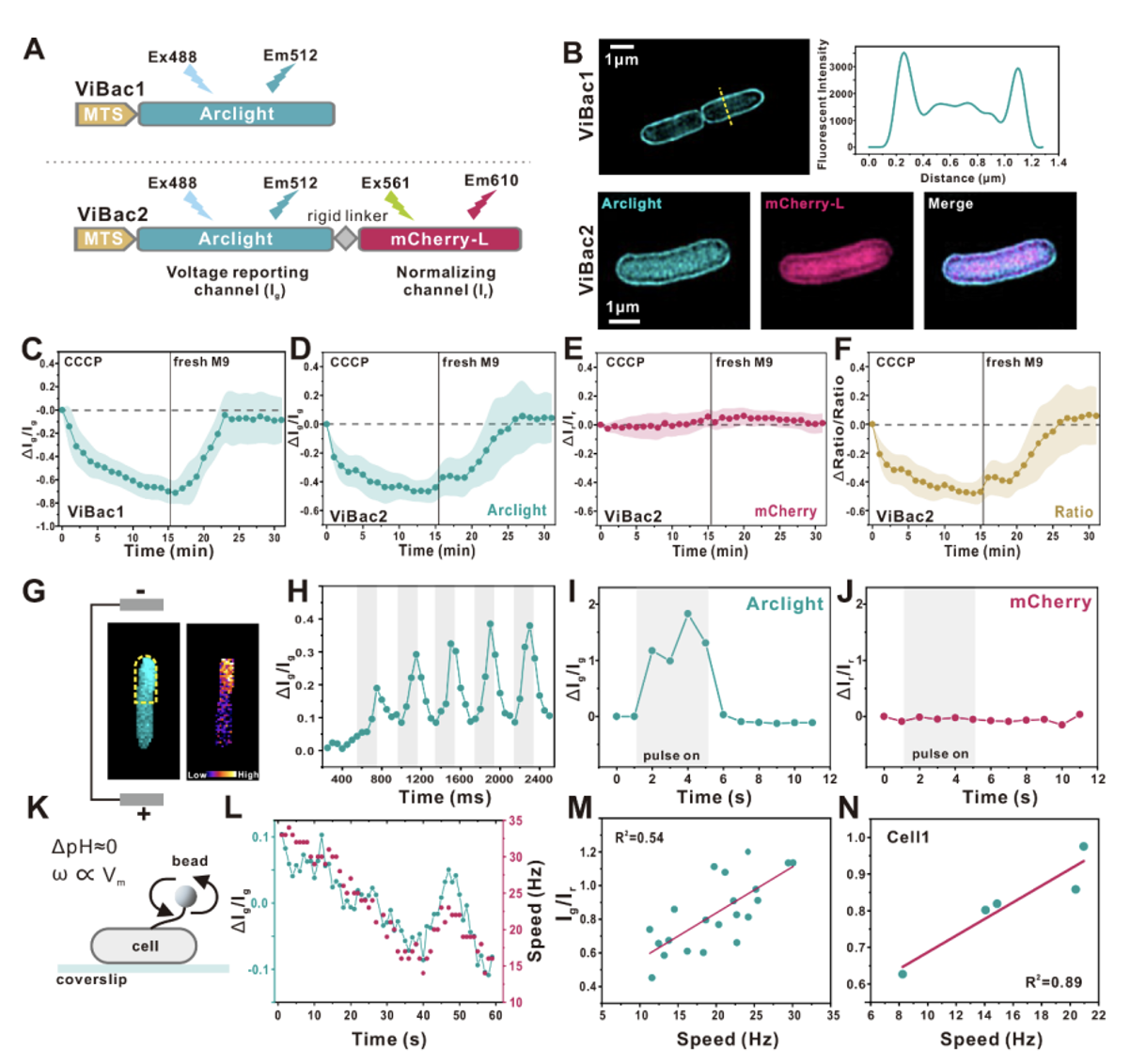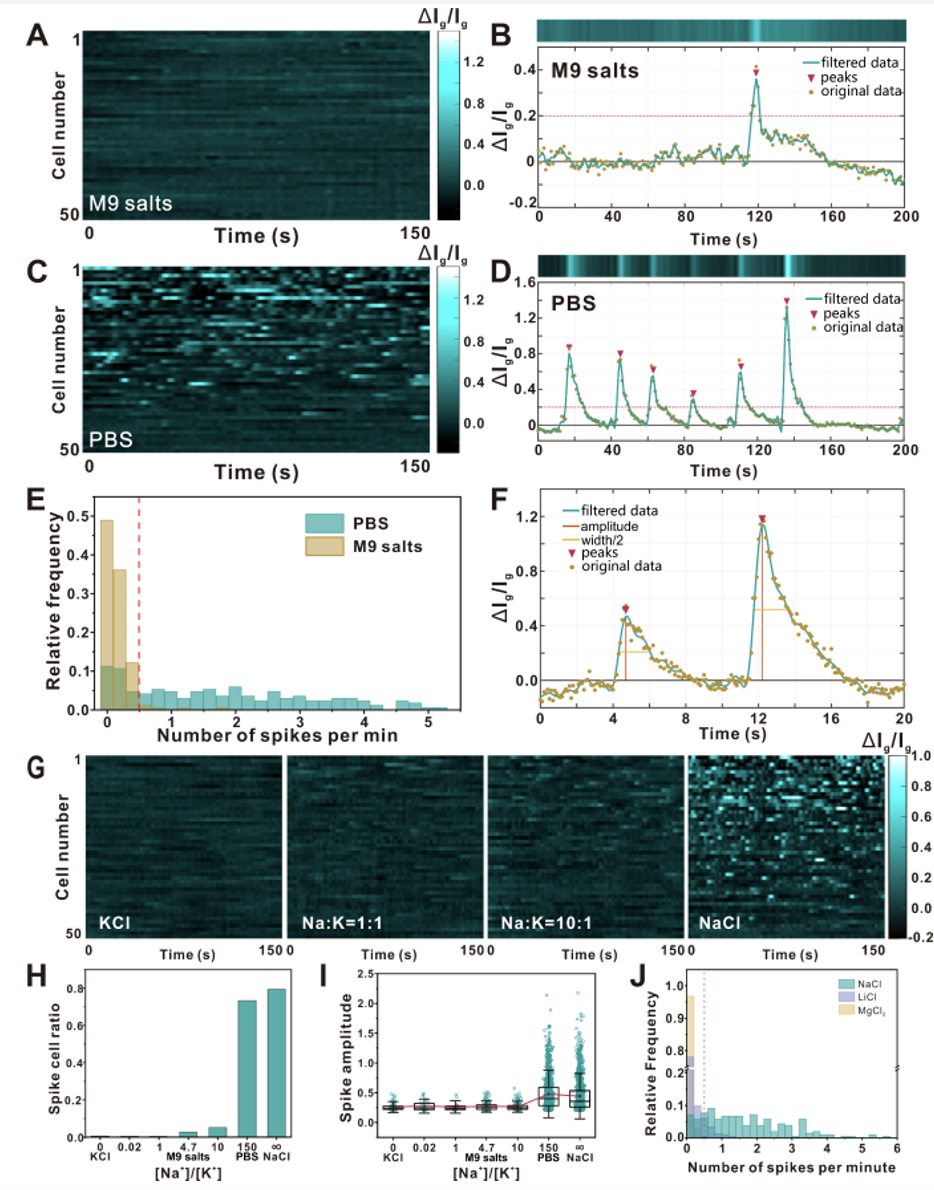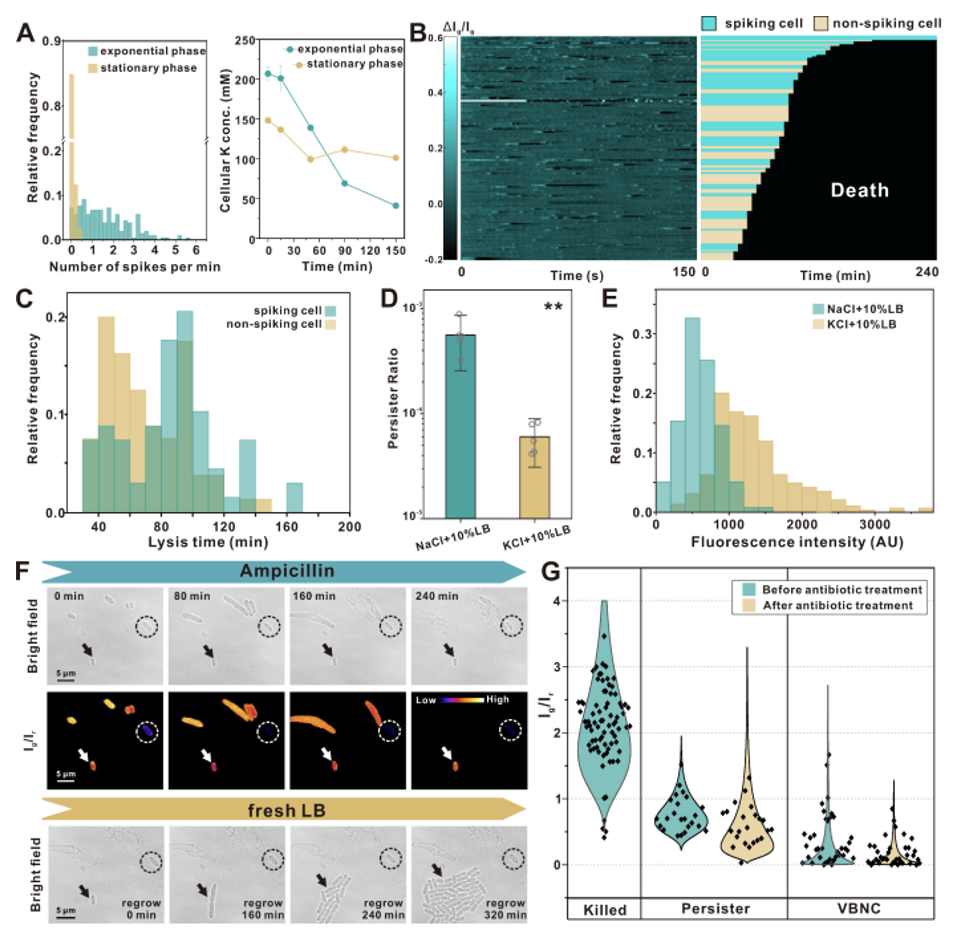
PNAS | Sensitive bacterial Vm sensors revealed the excitability of bacterial Vm and its role in antibiotic tolerance
Membrane voltage (Vm) is an important free energy source for bacteria. It powers and regulates many fundamental physiological processes, such as oxidative phosphorylation, transmembrane transport, flagellar motion, and cell division. It was generally believed that bacterial Vm is homeostatic, until recent studies revealed that bacterial Vm can be highly dynamic and enables cell-to-cell communication in biofilms1,2. However, the study of bacterial electrophysiology is very limited, mainly due to a lack of convenient tools for monitoring bacterial Vm dynamics in vivo at the single-cell level.
Fan Bai group from Biomedical Pioneering Innovation Center (BIOPIC), Beijing Advanced Innovation Center for Genomics (ICG) at Peking University published a paper in PNAS titled Sensitive bacterial Vm sensors revealed the excitability of bacterial Vm and its role in antibiotic tolerance on 9 January 2023. They developed a set of novel genetically encoded bacterial Vm sensors which allow single-cell recording of bacterial Vm dynamics in live cells with high temporal resolution. Using these new sensors, they revealed the electrically "excitable" and "resting" states of bacterial cells. Their findings demonstrated the potential of the newly developed voltage sensors to reveal the intriguing connections between bacterial Vm and antibiotic tolerance.

They reported the development and characterization of two GEVIs (genetically encoded voltage indicators), ViBac1 and ViBac2, for monitoring bacterial Vm in vivo. Structured illumination microscopy (SIM) revealed that both ViBac1 and ViBac2 anchor successfully onto the E. coli inner membrane. ViBac1 sensors enabled single-cell recording of bacterial Vm dynamics in live cells with high temporal resolution down to a few hundreds of milliseconds. ViBac2 enables comparison of Vm between different individual bacterial cells, reflecting population heterogeneity (Figure 1).

Figure 1. Development and characterization of the voltage sensors ViBac1 and Vibac2.
Using ViBac1, they first reported the frequent hyperpolarization spikes in bacteria. The result shows that the distinct dynamics of E. coli membrane voltage in PBS and M9 salts. The frequency and amplitude of the transient hyperpolarization events increased significantly in PBS (Figure 2), suggesting that most of the cells had entered a hyper-excited state and these frequent hyperpolarization spikes in Vm are triggered by high [Na+] and low [K+] environments. Similar spiking behavior was also observed in another Gram-negative bacteria Salmonella typhimurium and a Gram-positive bacteria Bacillus subtilis, suggesting that this phenomenon is widespread across different bacteria species.

Figure 2. Distinct dynamics of E. coli membrane voltage in PBS and M9 salts.
Further investigations revealed that the spiking behavior is accompanied by K+ outflow based on the results from the GINKO1 measurement and ICP-OES experiments. Moreover, the hyperpolarization spikes depend on the metabolic state. Inhibition of aerobic respiration significantly suppressed the spiking of membrane voltage (Figure3). It is noteworthy that the hyperpolarization spikes enhance the efflux activity and thereby promote bacterial antibiotic tolerance.

Figure 3. Excitability of exponential phase E. coli cells and its relationship with metabolic status.
However, the Vm of stationary phase is in a resting state. Although the Vm was static, it displayed strong cell-to-cell heterogeneity, as evidenced by the wide distribution of ViBac2 ratios across each population of cells. The fate of stationary phase cells was tracked under ampicillin treatment. Previous studies have reported that a low Vm may promote antibiotic tolerance, but these results were obtained largely via bulk measurement. Here, the result revealed that cells with relatively low Vm prior to antibiotic treatment were more likely to be persisters, however, cells with ultra-low Vm were VBNCs (viable but non-culturable cells,VBNC) (Figure4). In their previous work3, they have introduced the concept of “dormancy depth” to provide a unifying framework for understanding both the persisters and VBNCs. Persister cells are considered to be in shallow dormancy depth, while VBNCs are in a deeper dormancy. they speculate that Vm can serve as an indicator of the dormancy depth.

Figure 4. Role of membrane voltage dynamics and heterogeneity in antibiotic tolerance.
In summary, they developed a set of novel genetically encoded bacterial Vm sensors which allow single-cell recording of bacterial Vm dynamics in live cells with high temporal resolution. These new sensors revealed the electrically "excitable" and "resting" states of bacterial cells dependent on their metabolic status. In the electrically excitable state, frequent hyperpolarization spikes in bacterial Vm are observed, which is regulated by Na+/K+ ratio of the medium and facilitates increased antibiotic tolerance. In the electrically resting state, bacterial Vm displays significant cell-to-cell heterogeneity and is linked to the cell fate after antibiotic treatment. Their findings demonstrate the potential of the newly developed voltage sensors to reveal the intriguing connections between bacterial Vm and antibiotic tolerance.
Xin Jin (Biomedical Pioneering Innovation Center (BIOPIC), School of Life Sciences, Peking University), Xiaowei Zhang (School of Life Sciences, Peking University), Xuejing Ding (Biomedical Pioneering Innovation Center (BIOPIC), Academy for Advanced Interdisciplinary Studies, Peking University), Tian Tian (Biomedical Pioneering Innovation Center (BIOPIC), Peking University) are co-first authors of this work. Fan Bai (Peking University) is the responding authors of this work. This research was supported by the National Natural Science Foundation of China, the Beijing Future Genetic Diagnostics High Precision Innovation Center, and the National Center for Protein Science of Peking University.
DOI: https://doi.org/10.1073/pnas.2208348120
Reference:
1. A. Prindle, J. Liu, M. Asally, S. Ly, J. Garcia-Ojalvo, G. M. Süel, Ion channels enable electrical communication in bacterial communities. Nature. 527, 59–63 (2015).
2. J. M. Benarroch, M. Asally, The microbiologist’s guide to membrane potential dynamics. Trends Microbiol. 28, 304–314 (2020).
3. Y. Pu, Y. Li, X. Jin, T. Tian, Q. Ma, Z. Zhao, S. Lin, Z. Chen, B. Li, G. Yao, M. C. Leake, C.-J. Lo, F. Bai, ATP-Dependent dynamic protein aggregation regulates bacterial dormancy depth critical for antibiotic tolerance. Molecular Cell. 73, 143-156 (2019)